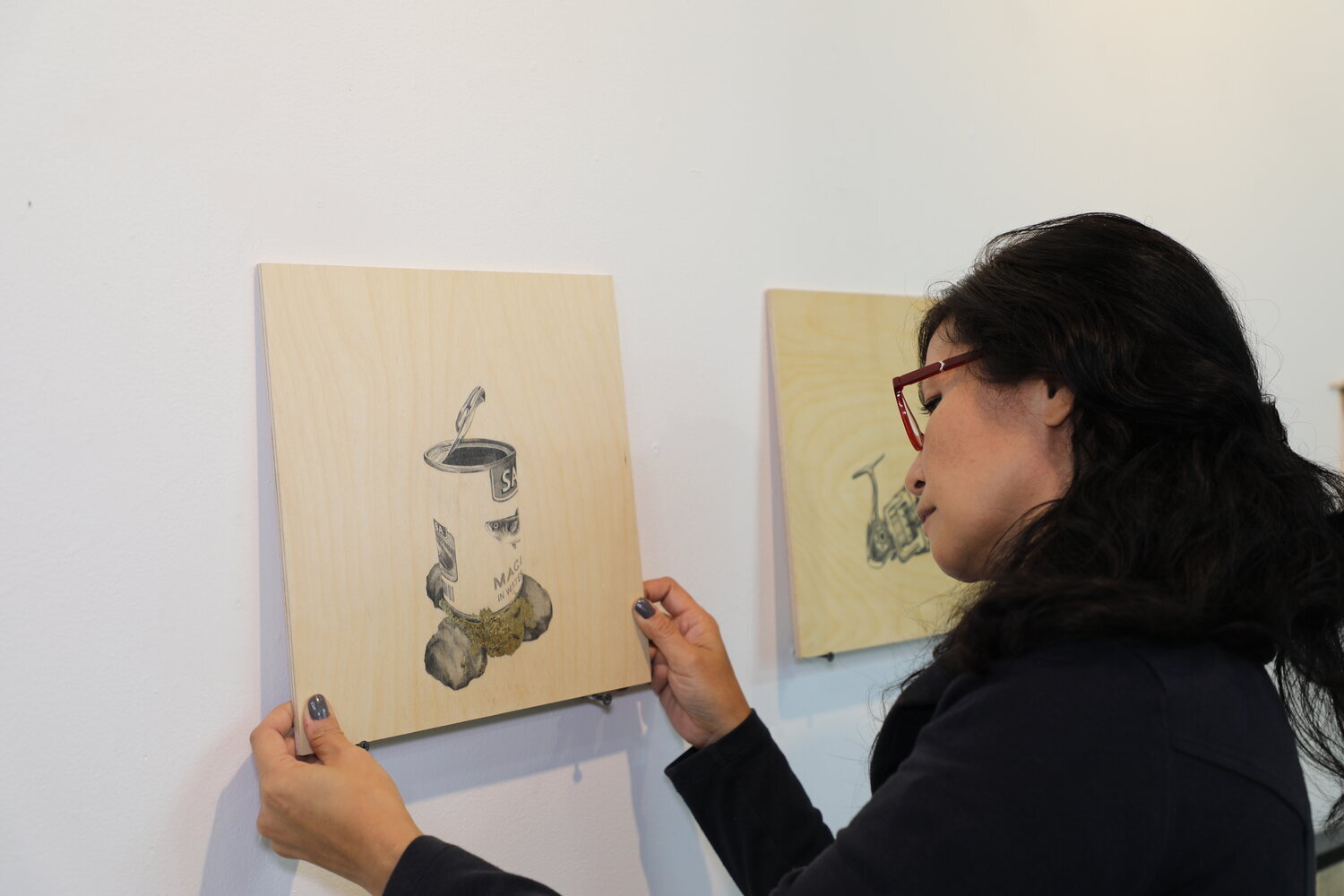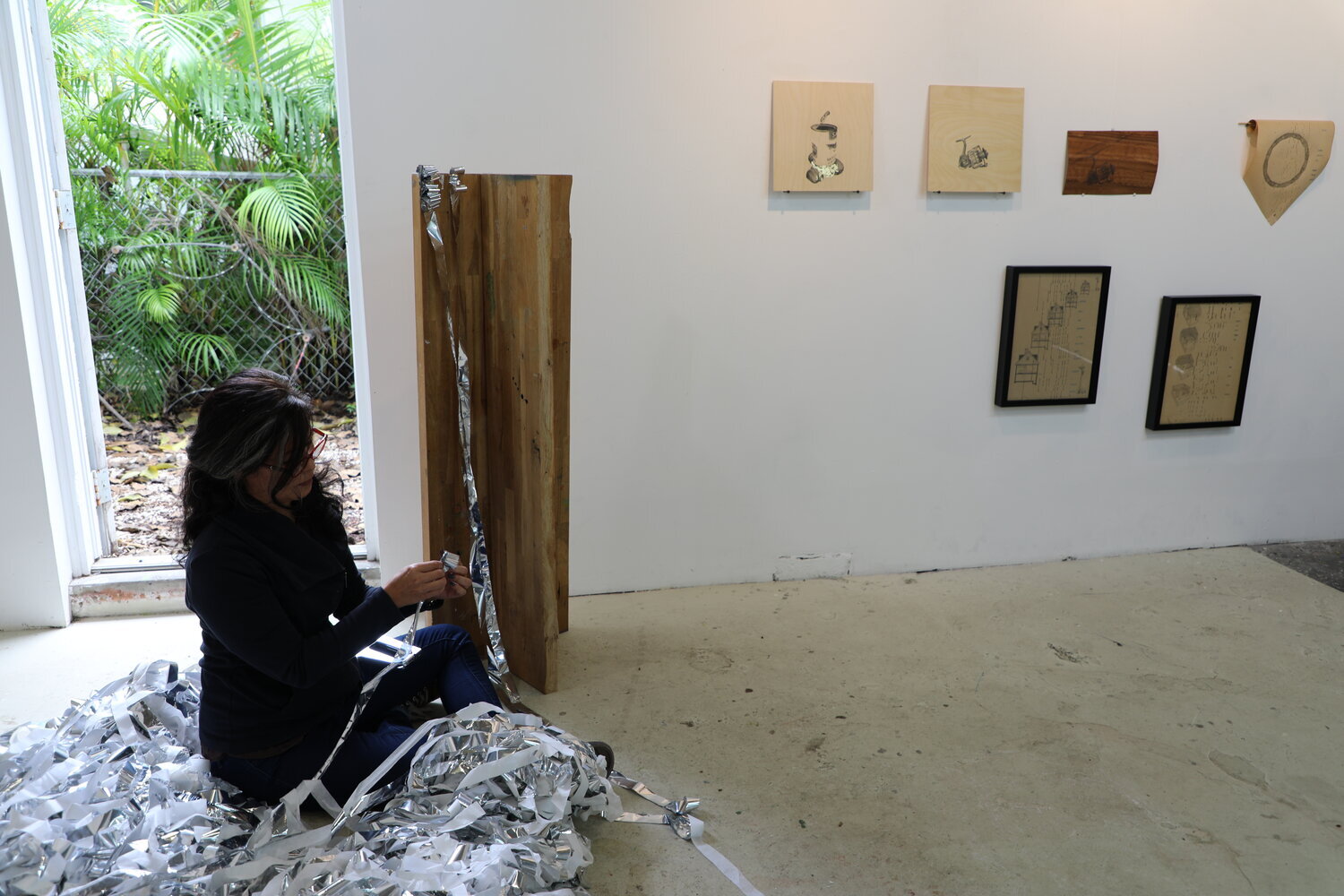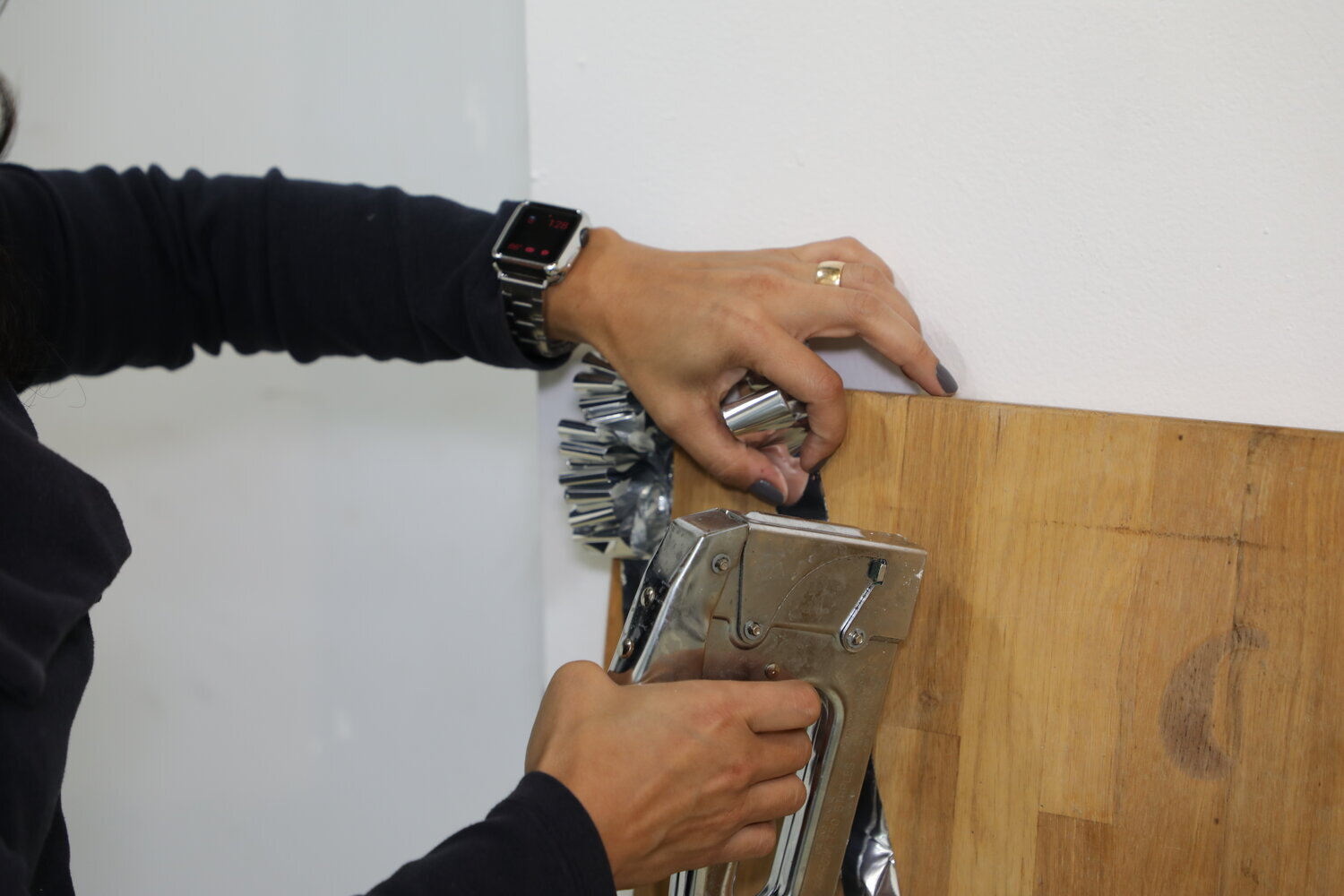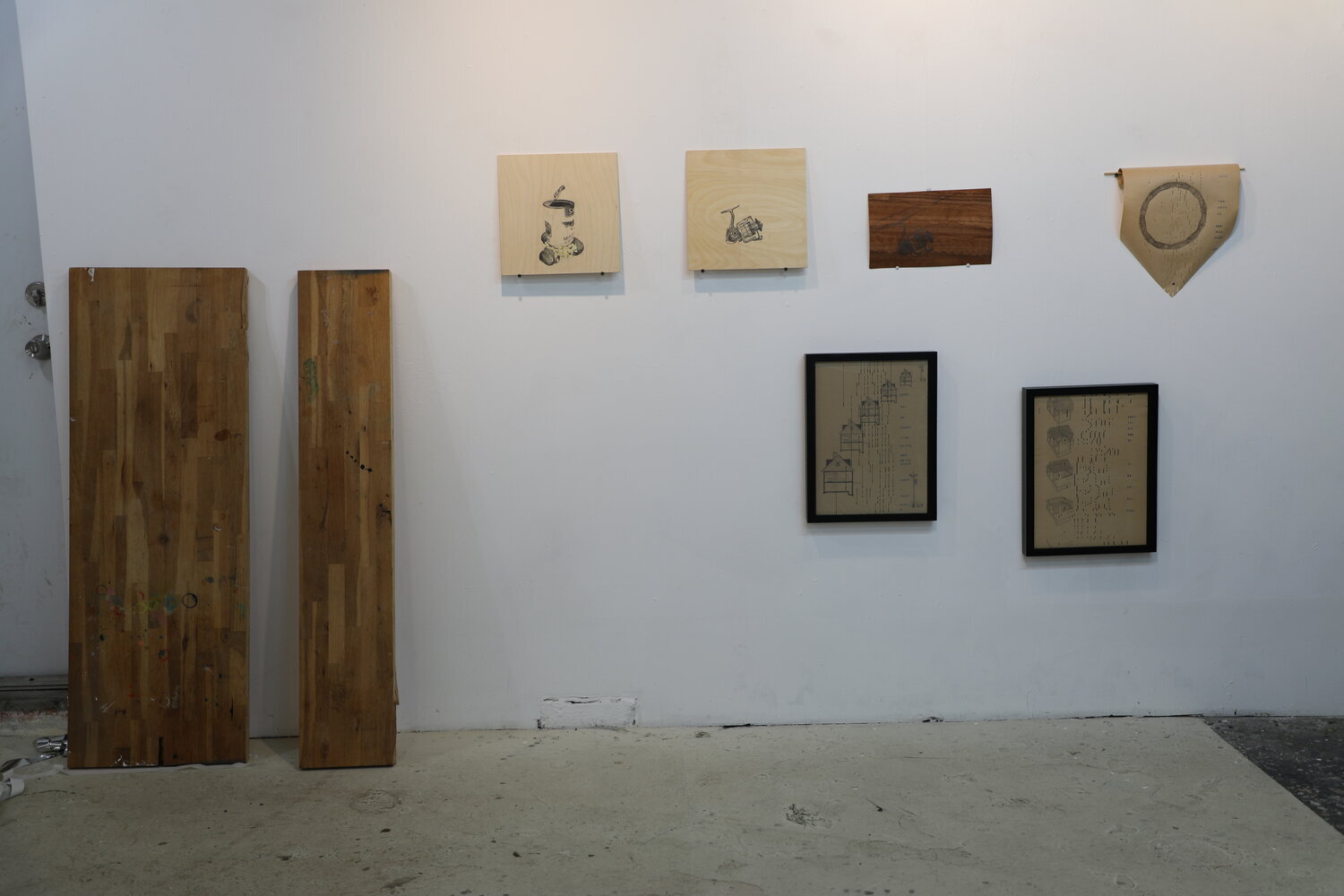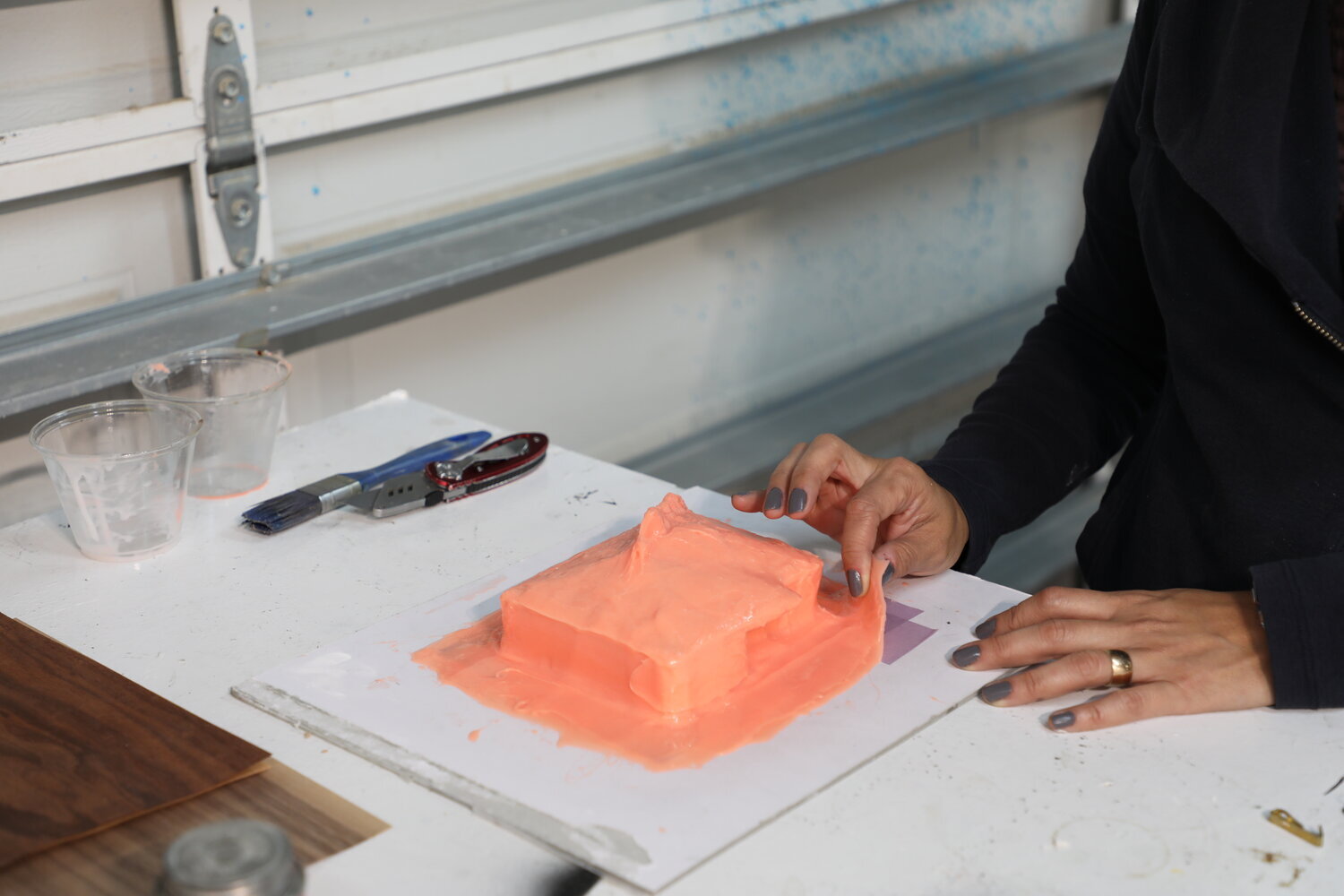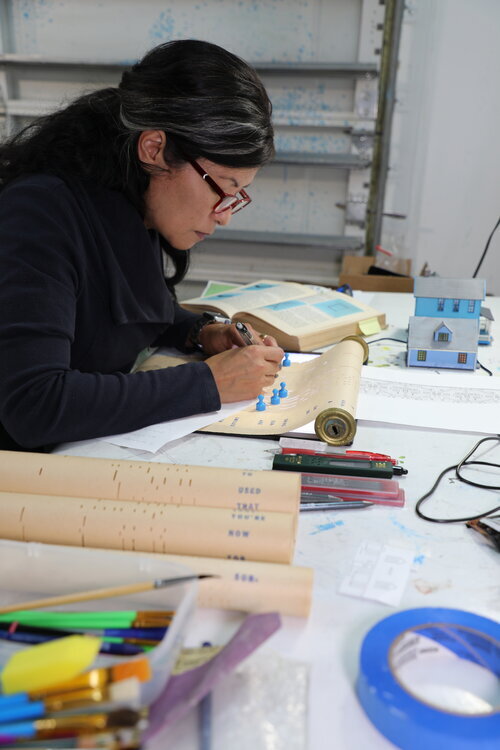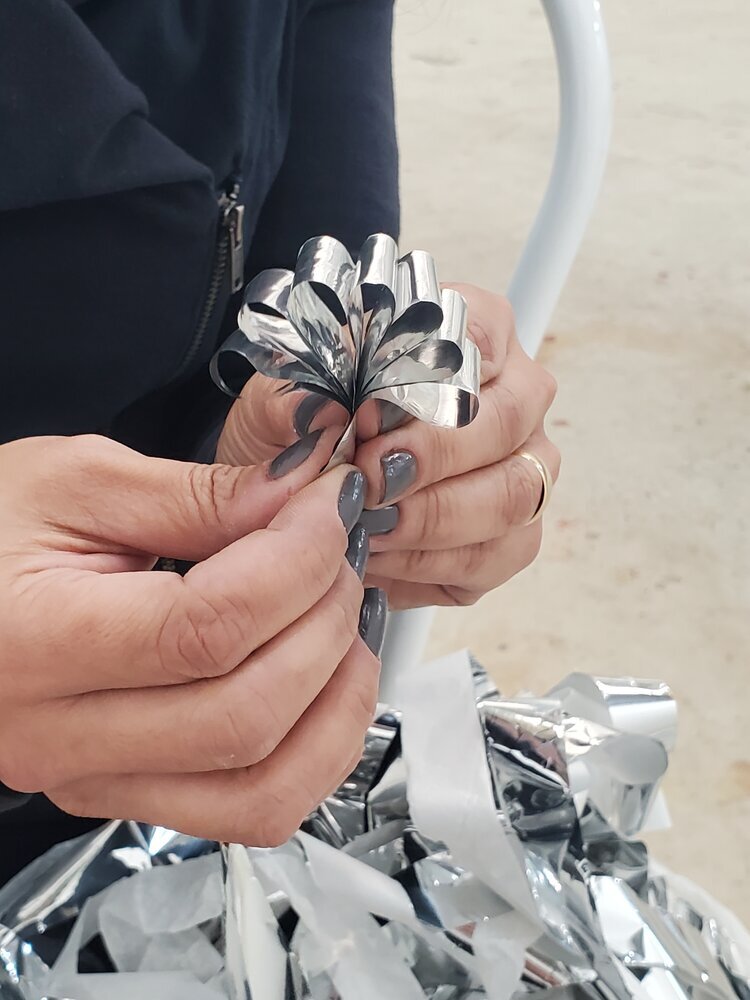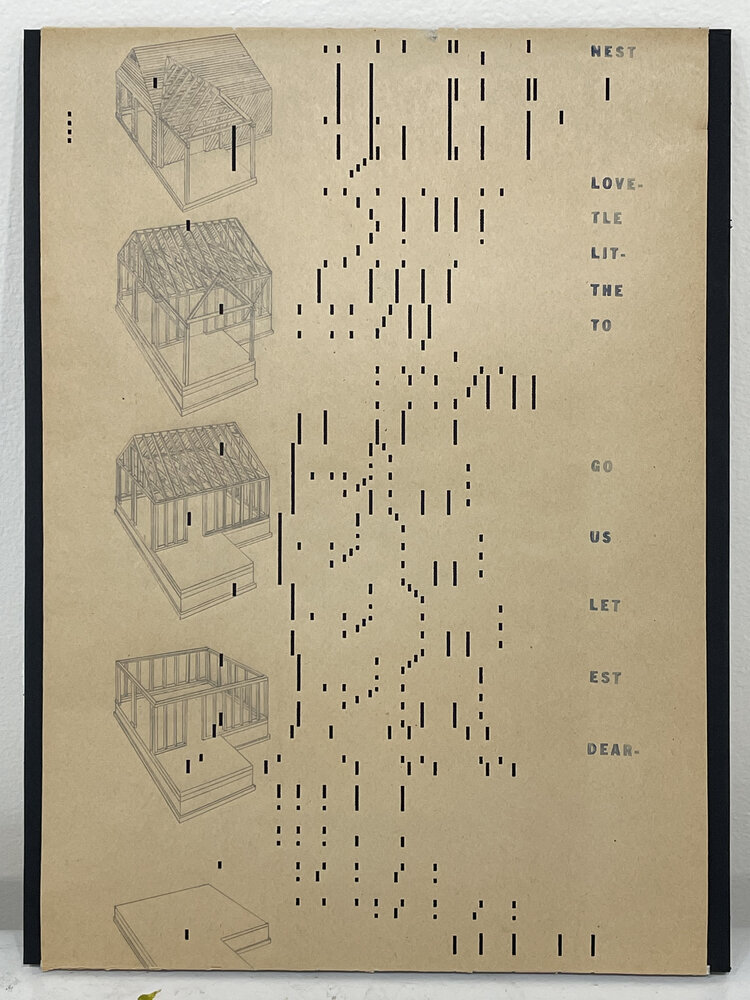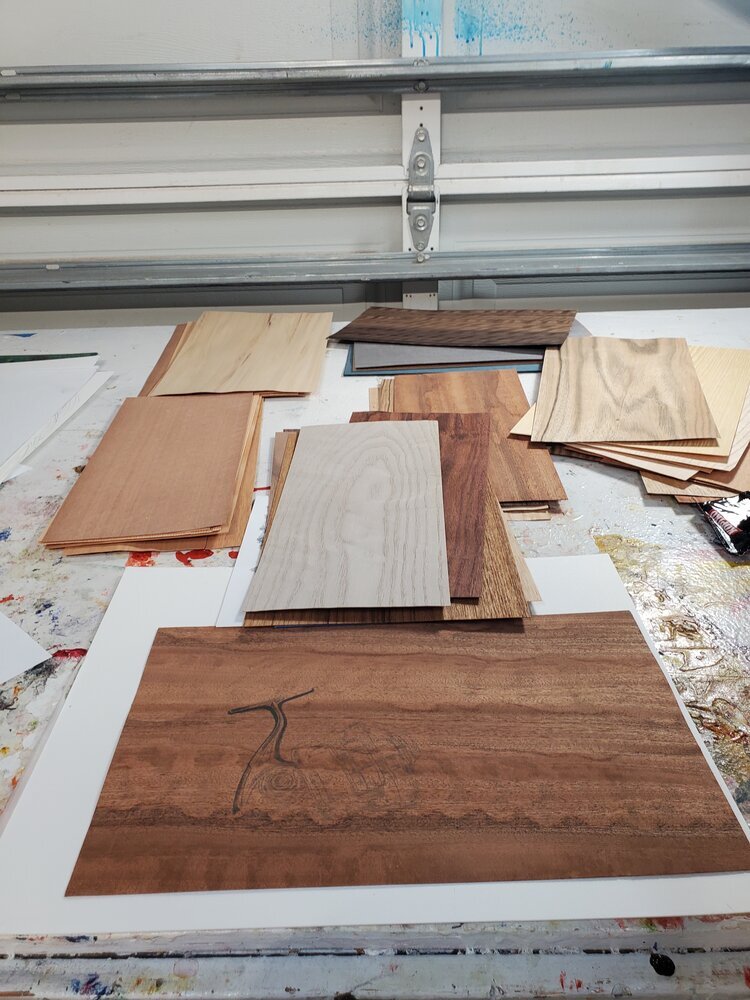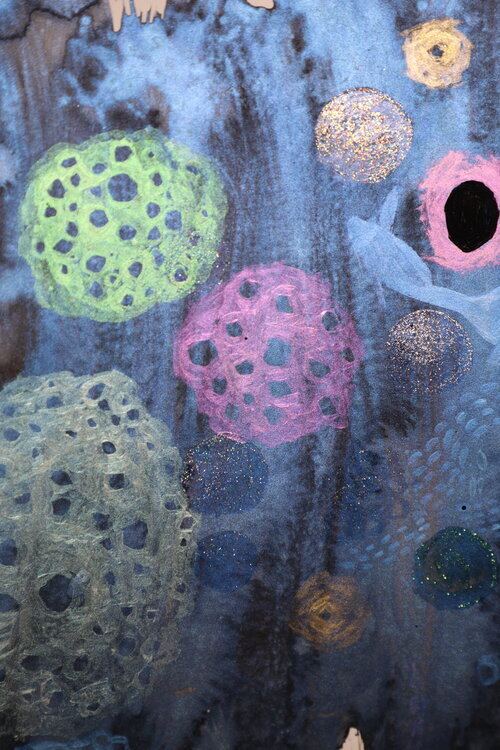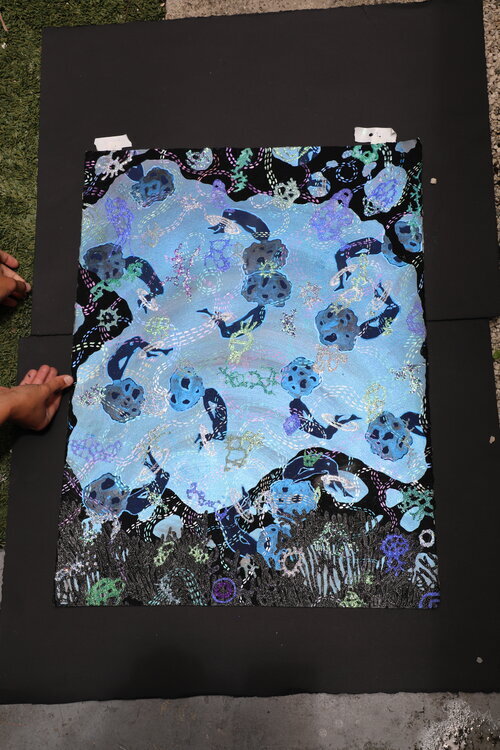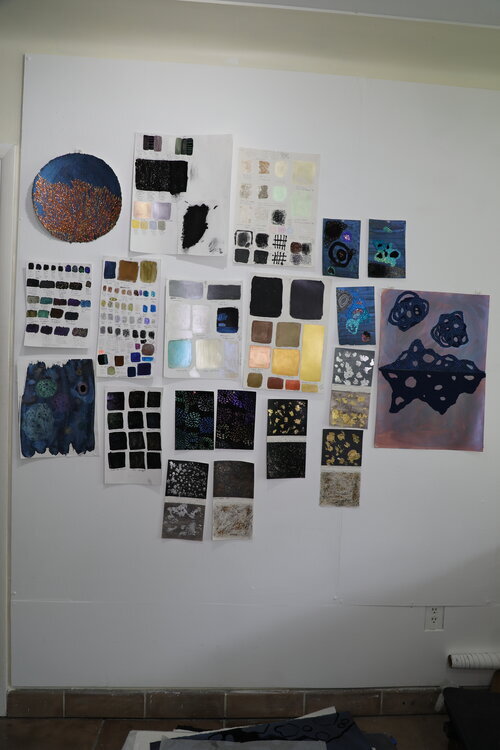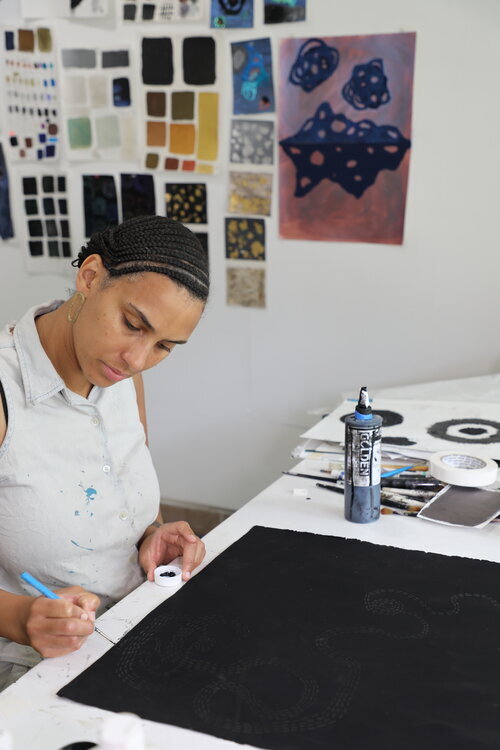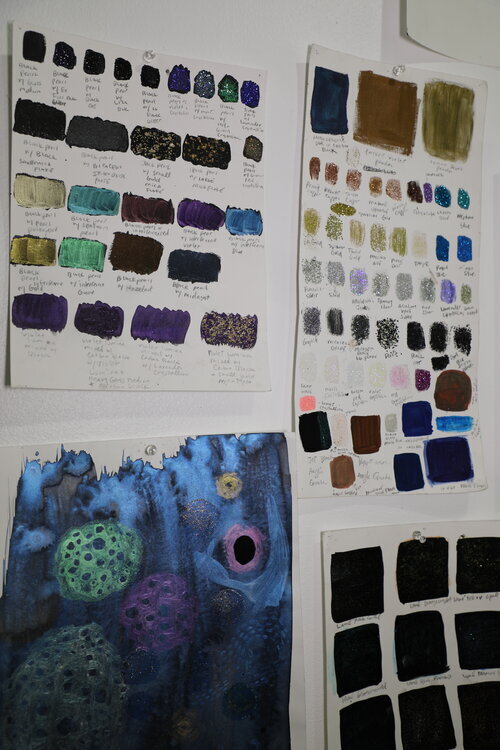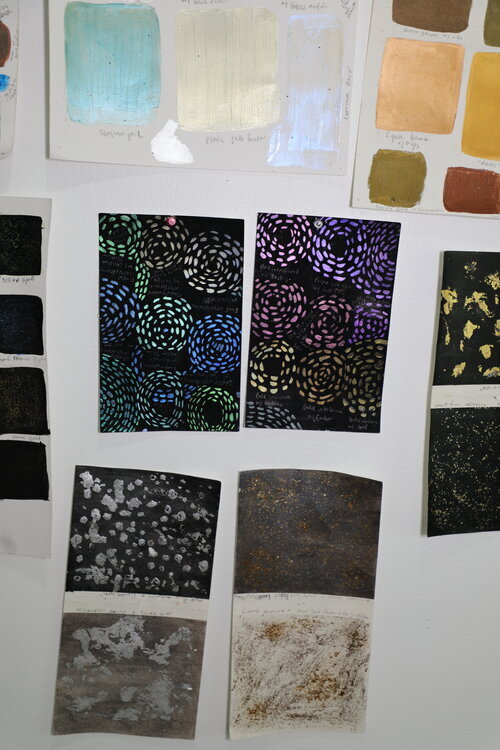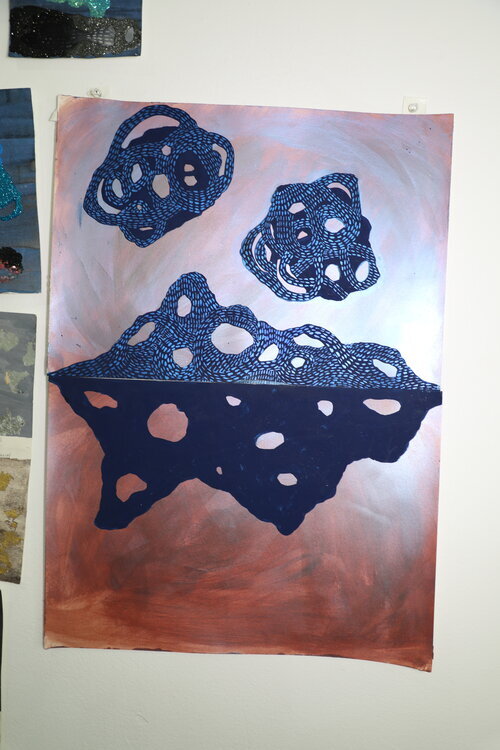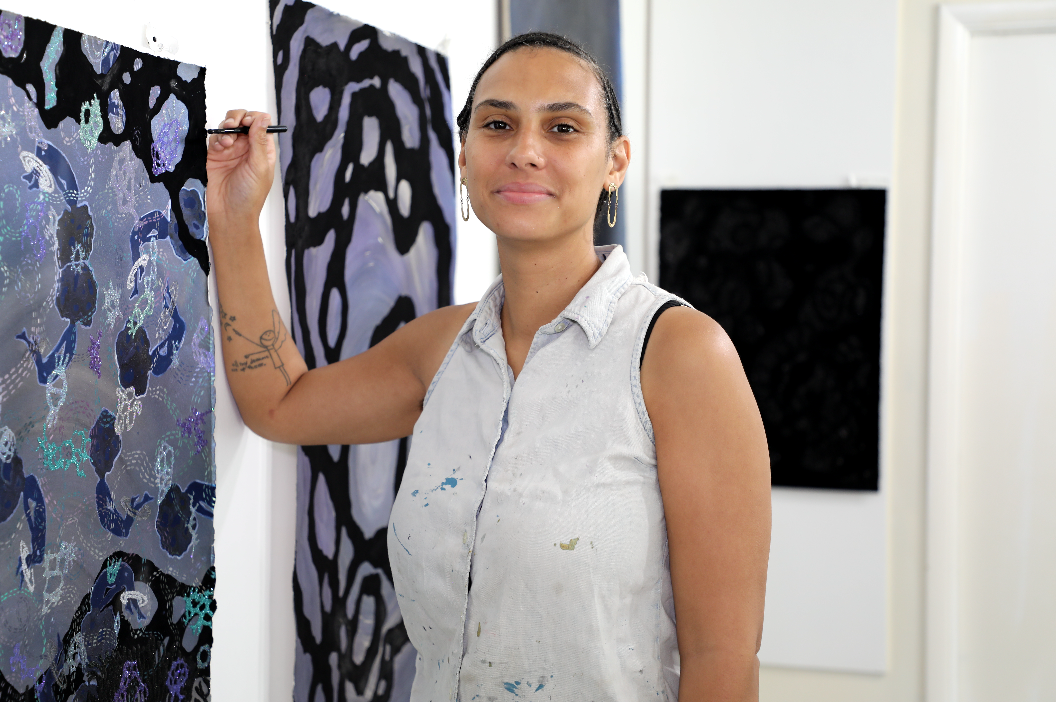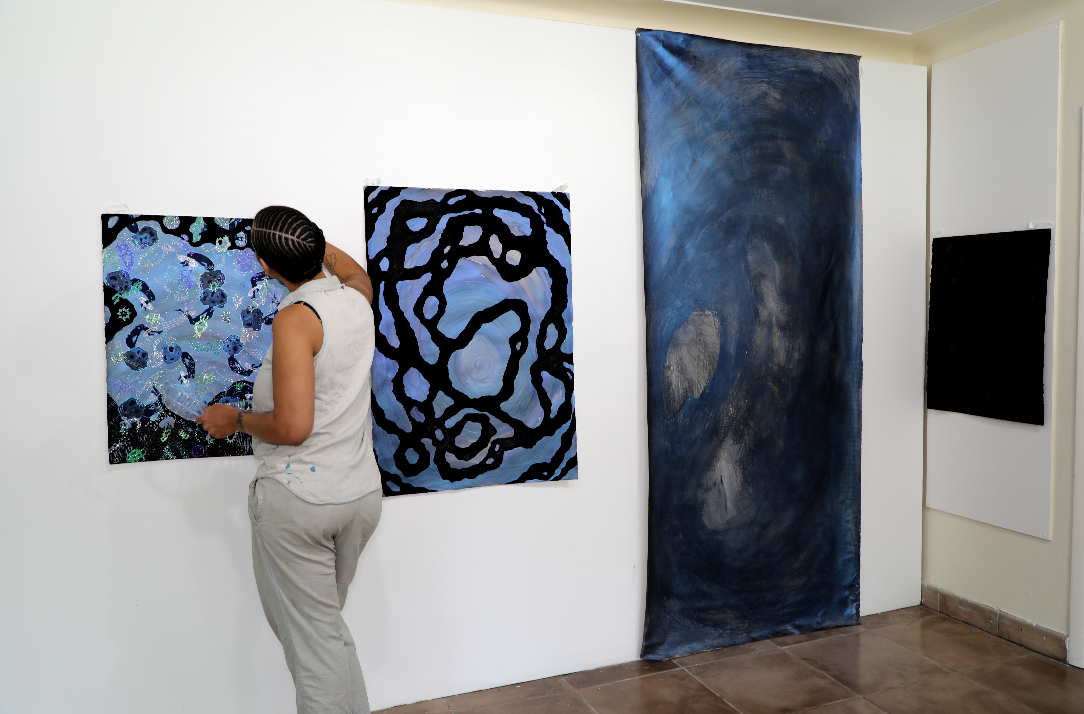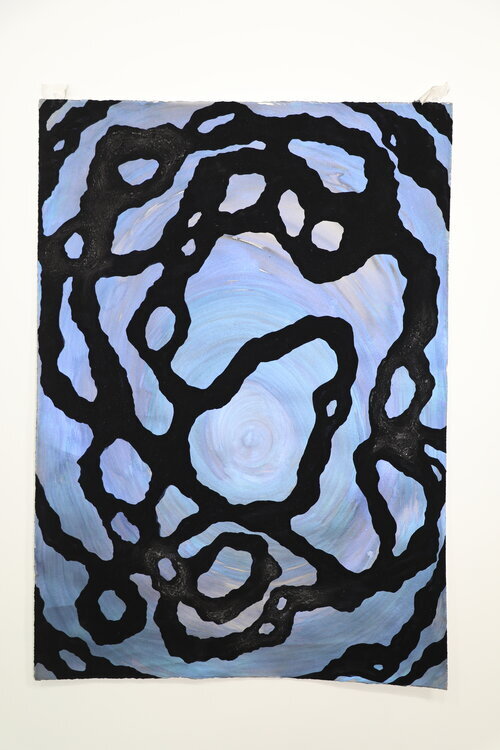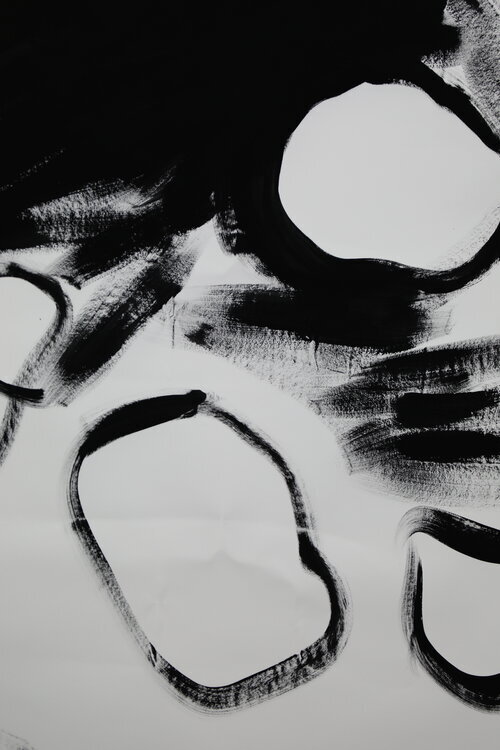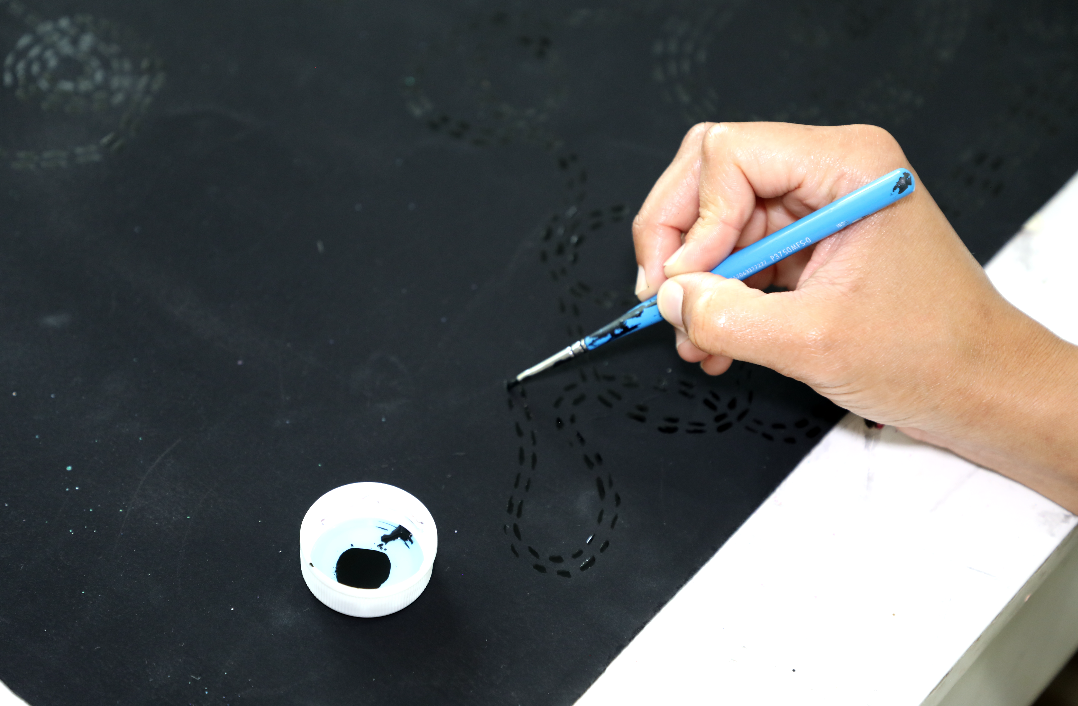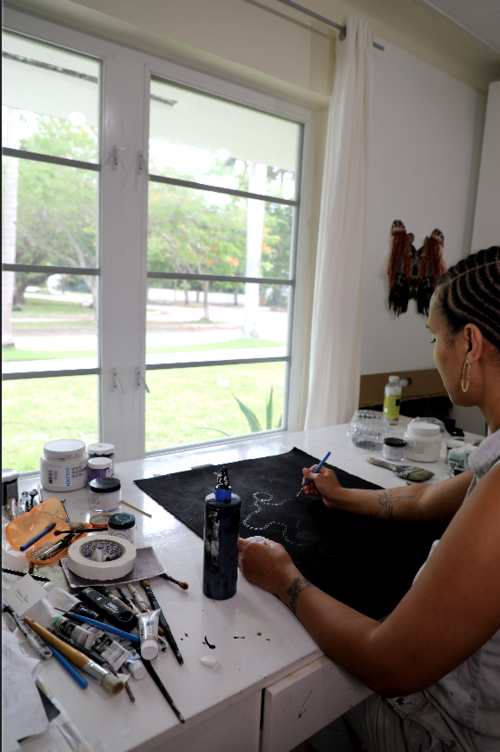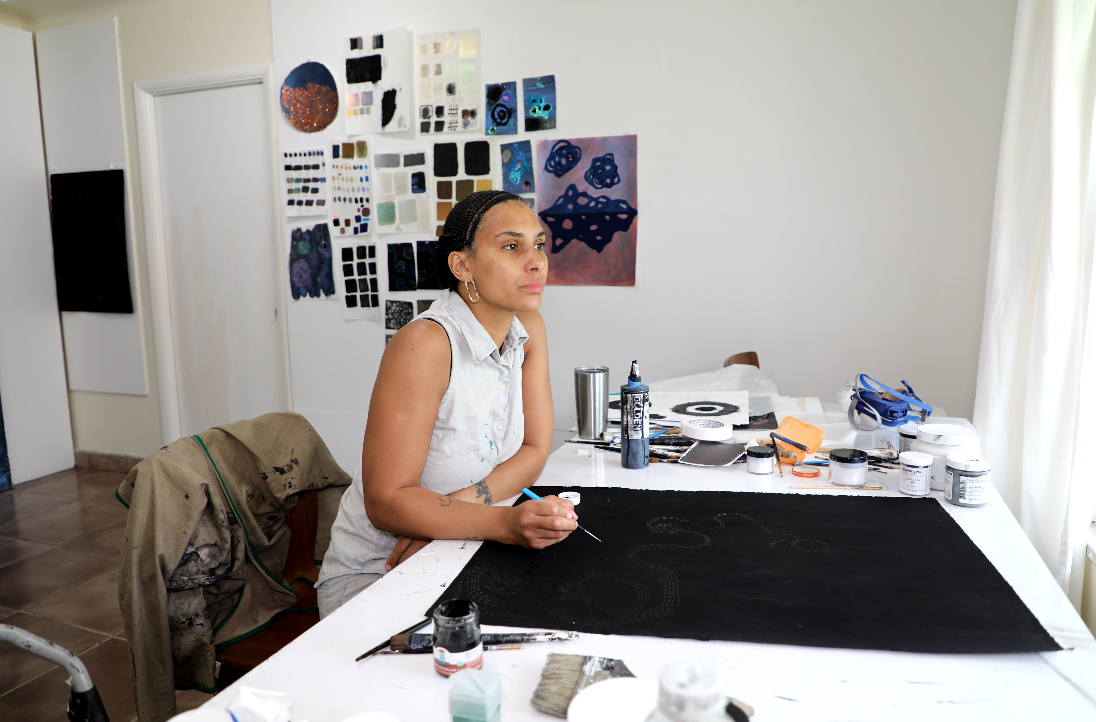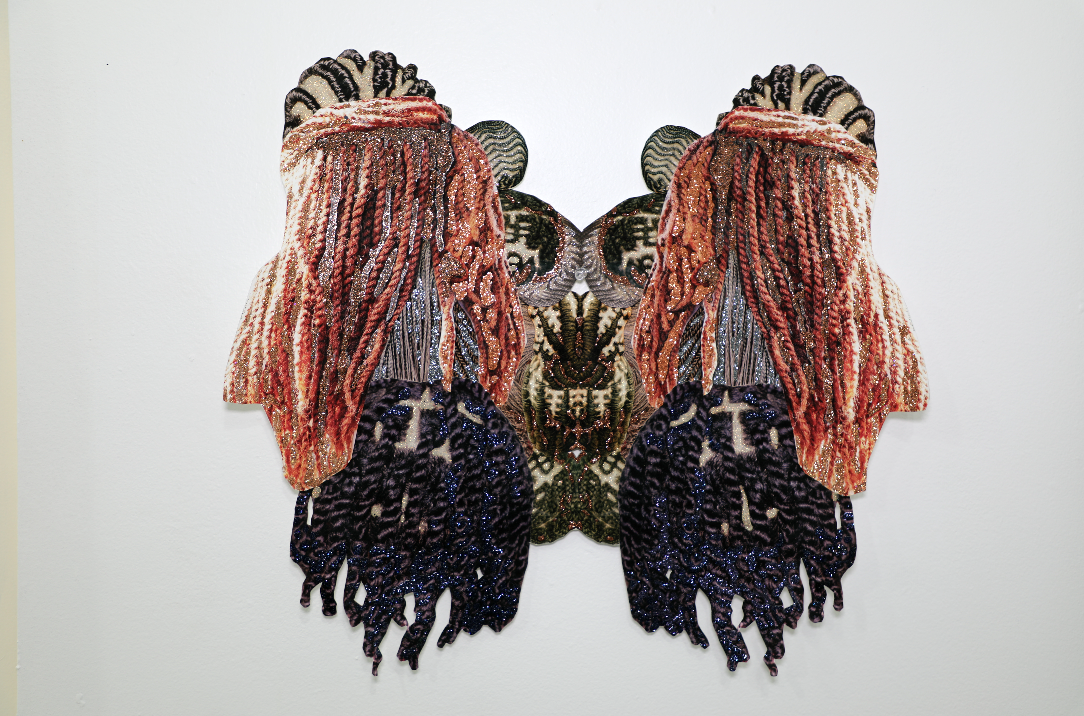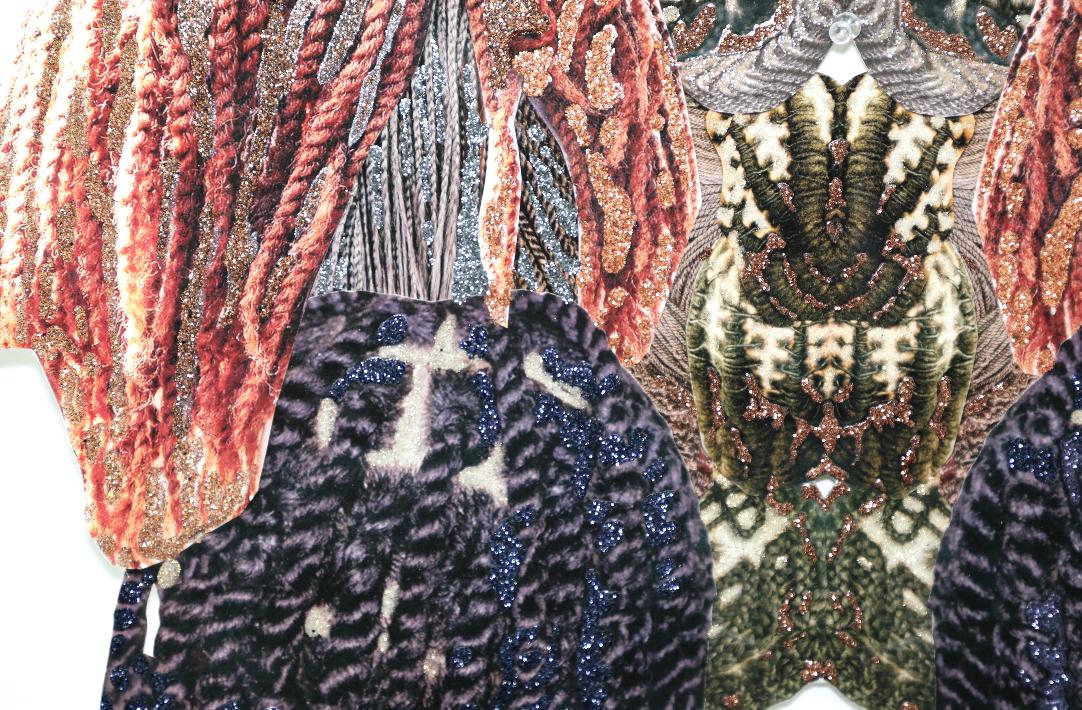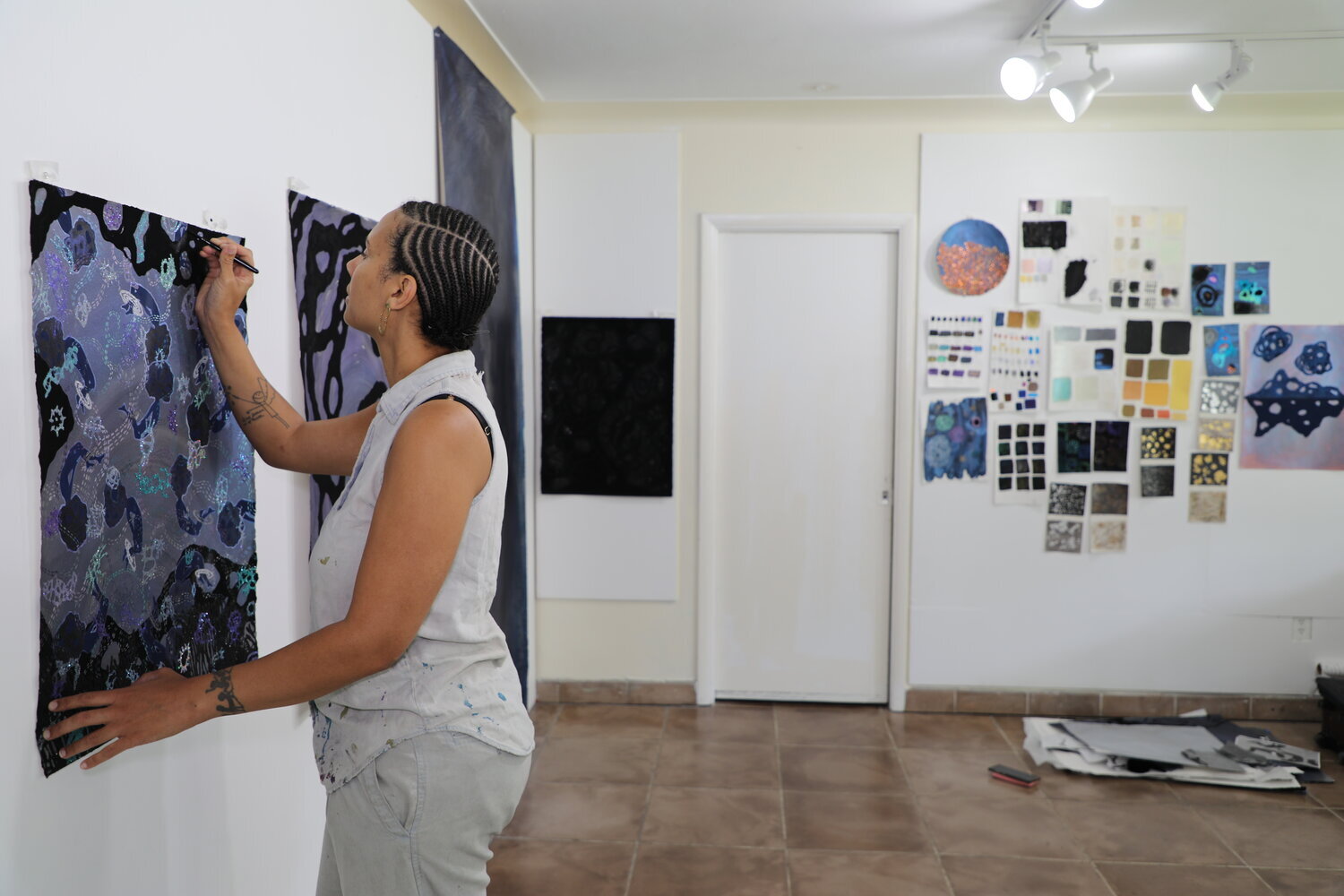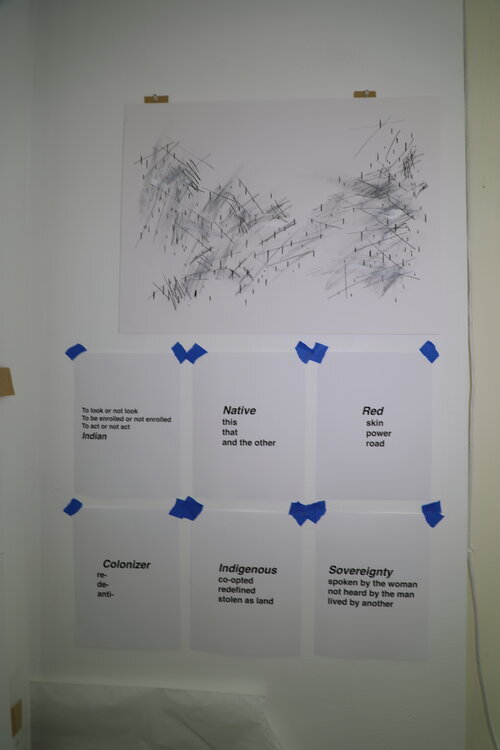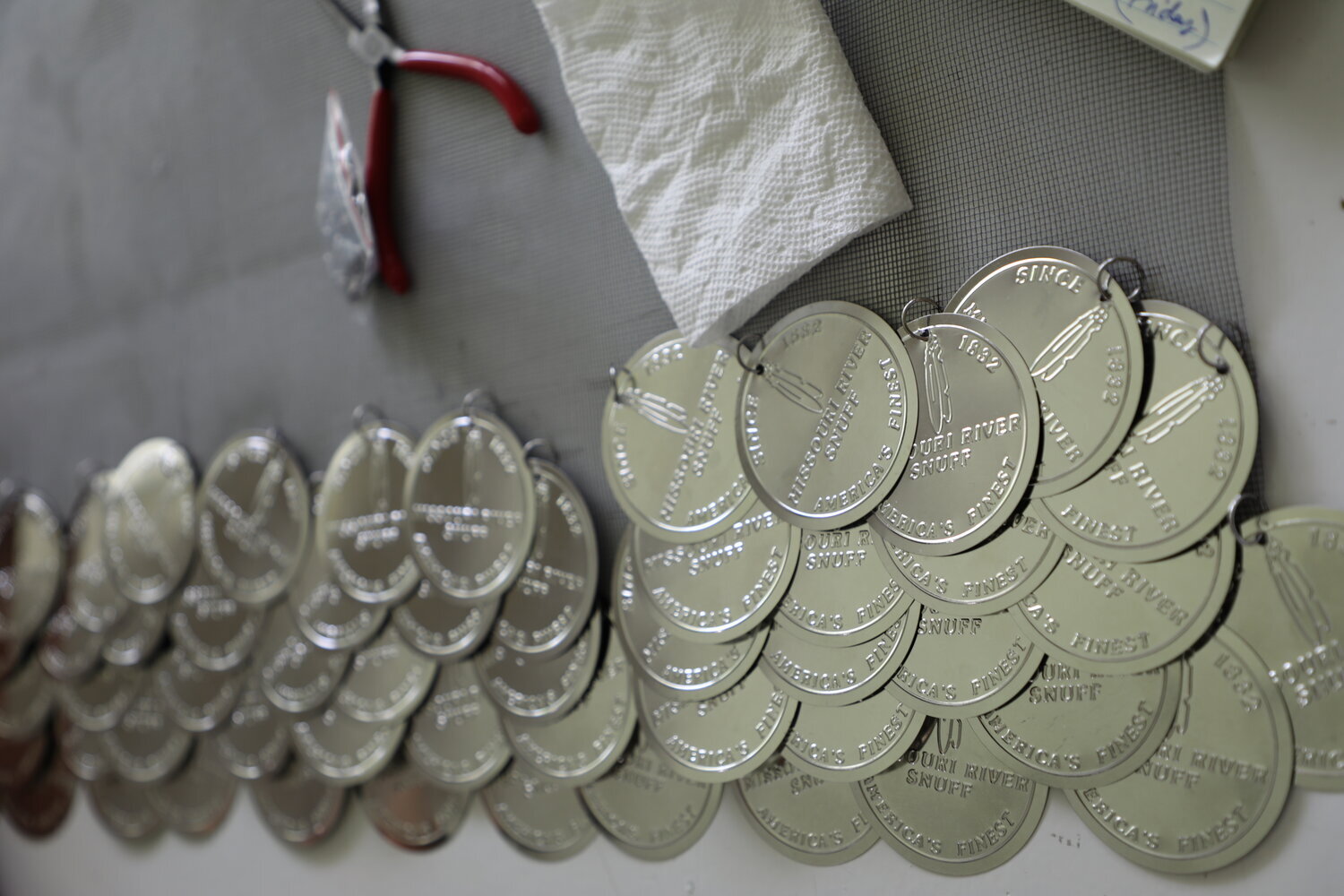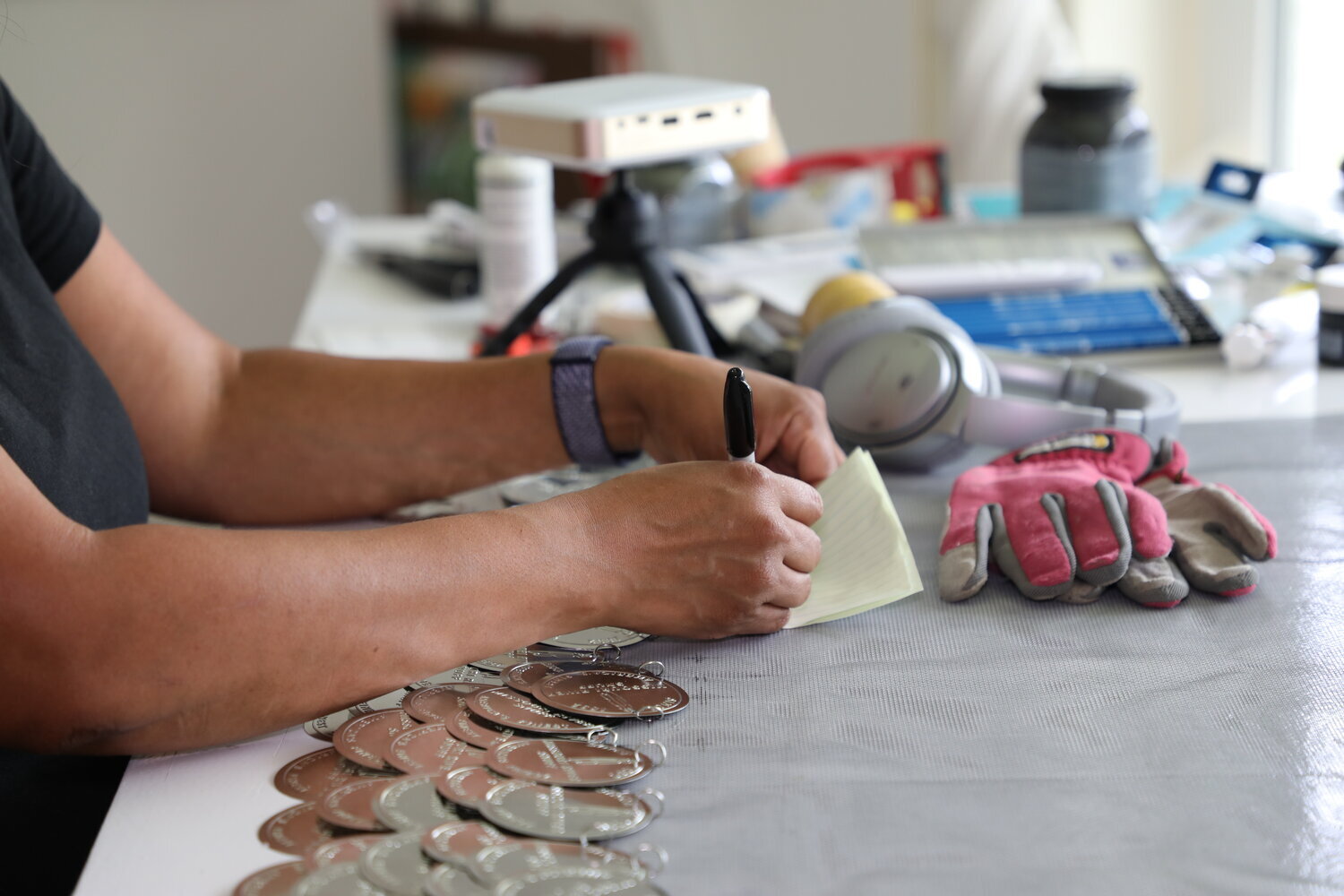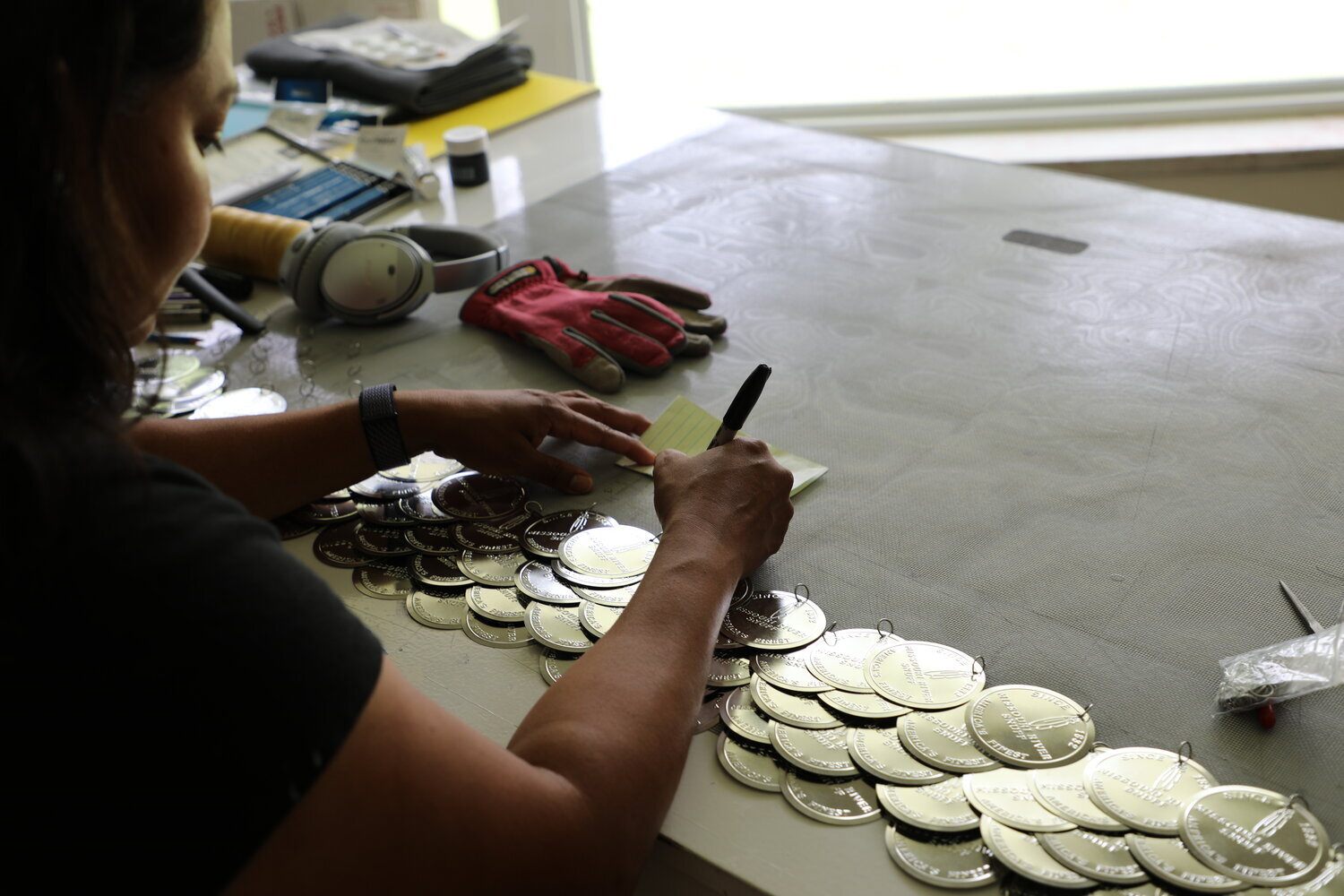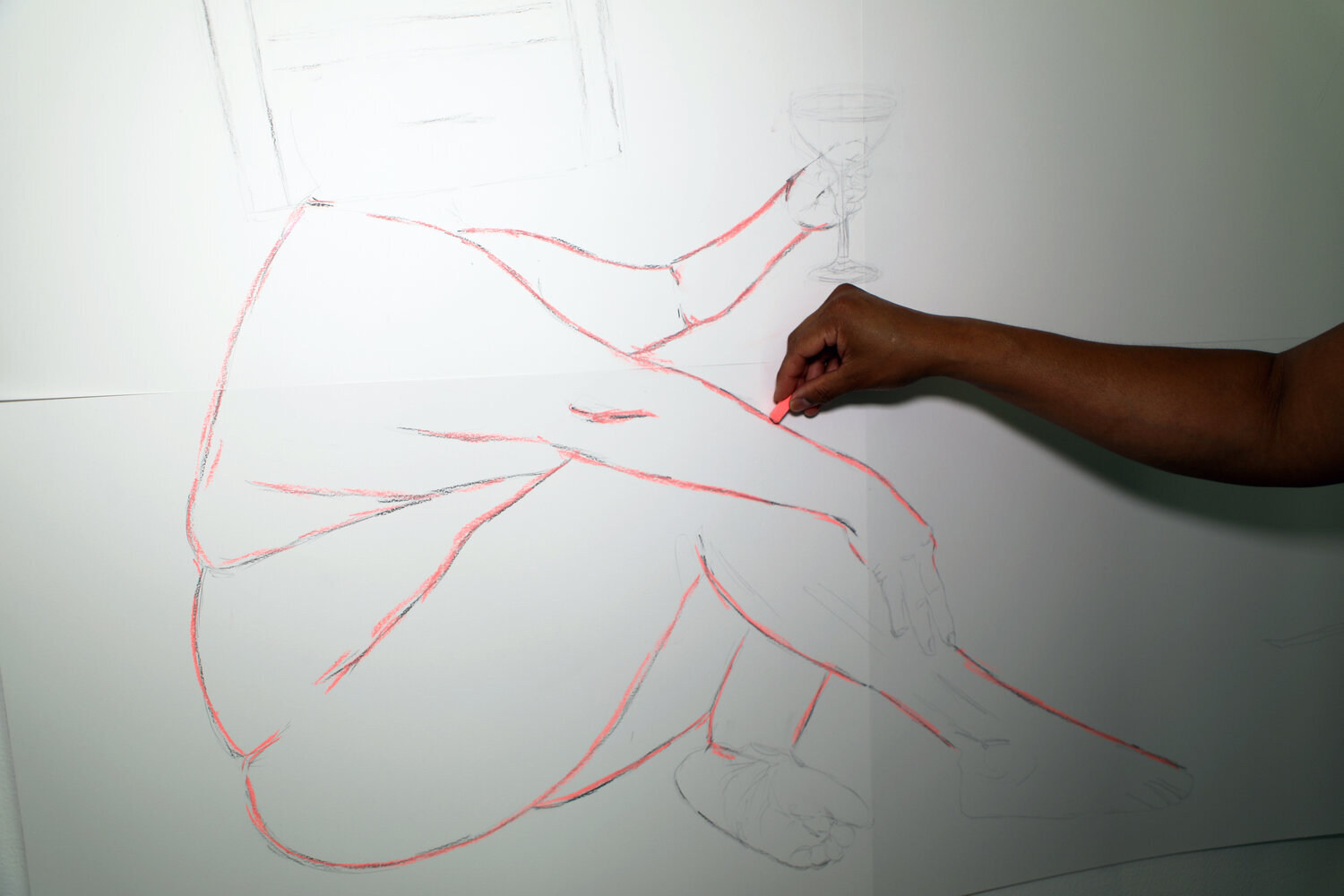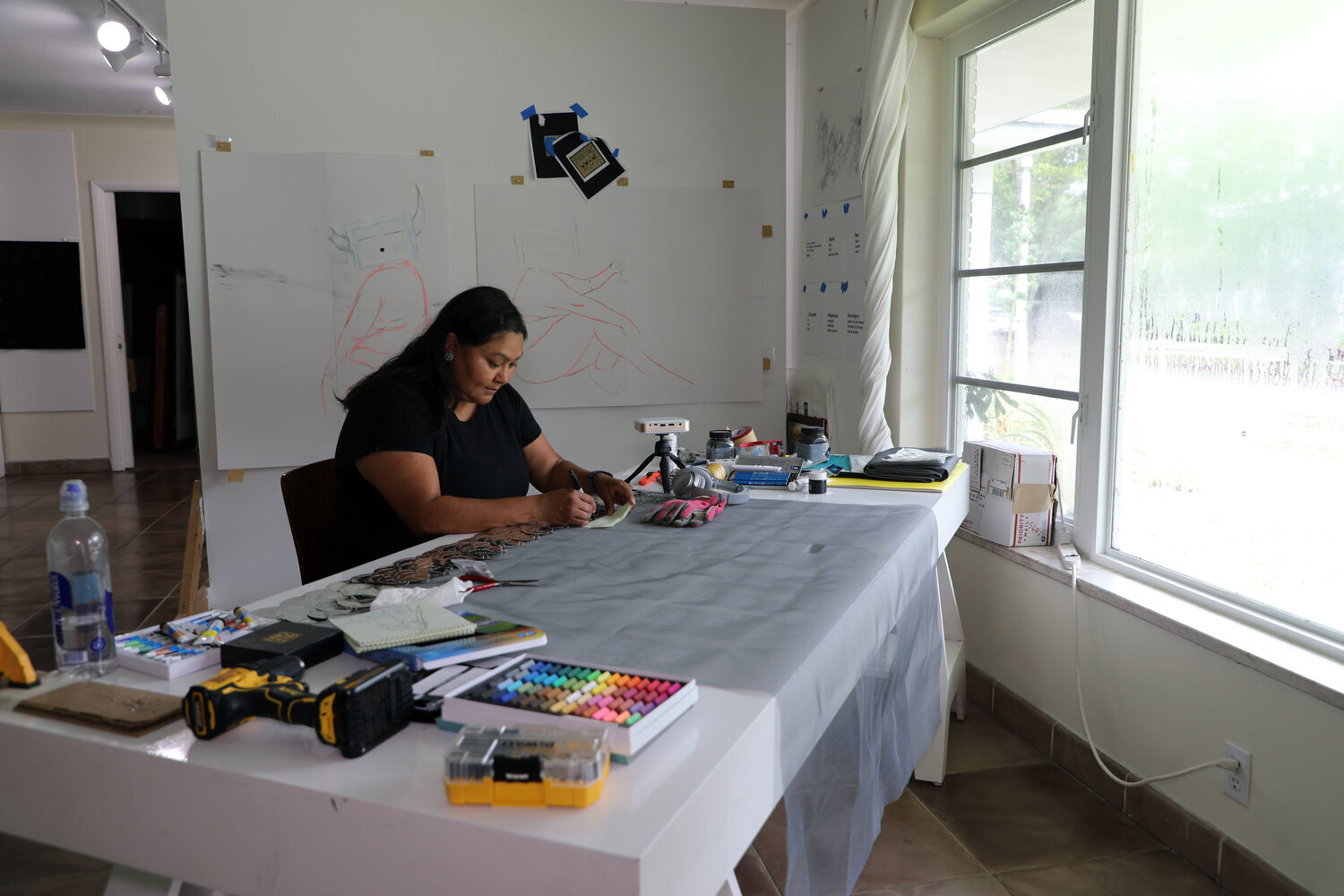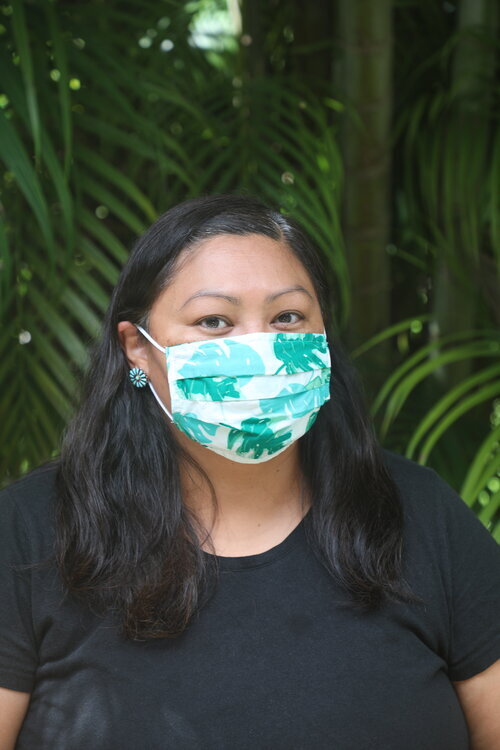June 2021
Leticia Bajuyo, Anna Tsouhlarakis and Alisa Sikelianos-Carter
Images courtesy of Alex Nuñez
Words by Nicole Martinez
“When I first heard about Fountainhead’s BIPOC Mothers residency, I knew I had to be a part of something that was so rare in the art world,” says Anna Tsouhlarakis just before she was scheduled to return home. Anna, along with Leticia Bajuyo and Anna Sikelianos-Carter, were the inaugural artists for Fountainhead’s Time For You residency, dedicated to providing space, time, and resources to BIPOC artists who are also mothers. Sponsored by Francie Bishop Good and David Horvitz and the Sustainable Arts Foundation, and launched this past June, each artist received a $1,500 stipend to offset the cost of childcare while in residence.
More than a space to make work, each of the artists were moved by the opportunity to spend time with women they could be their whole selves around. Discussing their practice alongside their motherhood sparked a level of personal freedom in their work that isn’t commonplace, especially in an art world where conversations around parenthood are seldom.
“In many situations, I’m there as a professor and dialogues about being a parent are not on the agenda; or I’m there as a parent and explaining being a sculptor who is going to this amazing residency,” says Leticia. “But what I felt here at Fountainhead Residency is that we could bring all of us and not edit or minimize. For me, this allowed for a sense of openness and vulnerability throughout the month together...”
“There was a marked difference in the energy compared to other residencies, where most people don’t have kids; we are making art and we are also responsible for the lives of other human beings and that’s a huge difference, it’s a big deal,” adds Alisa, noting that the fact that they were all people of color also added to the residency experience. “Being with women of color also, I’ve never ever been in this kind of space before, and I think it would have been different for sure if it was me and two white women.”
Fountainhead is extremely proud of the opportunity to welcome these women for a residency program so sorely needed, especially in a moment where women are increasingly being forced to abandon their careers in order to care for their children during a global pandemic.
Leticia Bajuyo
Have you ever wondered about your own potential - whether people notice it, or whether it can be nurtured? Sculptor and installation artist Leticia Baiuyo thinks about potential a lot. She wants to help others unlock their potential in boundless ways - much in the way she does when she’s making her work. “I spend so much time living up to responsibilities, that when I am in the studio I get to focus on what my hands, my eyes, and my heart are able to accomplish,” she says.
Originally from a small, midwest town named Metropolis, Leticia’s experiences growing up partially displaced and in-between demographic bubbles fostered her conceptual interests questioning fickle domestic desires and internalized pressures of assimilation while also generating a commitment to mundane and seemingly insignificant materials. The materials may start with everyday objects; her artwork tends to be bold, arduous, and enormous. Most of her projects involve labor intensive processes, from collecting thousands of objects, to assembling them into installations that often require coordination between multiple engineers, fabricators, and commissioning agencies.
Some of her best known works are large, site specific installations that utilize Leticia's process of 'weaving' old CDs together. Leticia will drill holes into each CD and use fishing wire to string them together into a plastic and metal fabric for sculptures that ignite a sense of desire in the physical experience and a dialogue about the knowledge sharing held within these technological relics.
She is interested in unpacking identity through the use of material, which can range from CDs to soaps or irrigation tubing to scraps of artificial turf. How can an insignificant object hold the key to something personal? That’s a question that comes up often for Leticia, who as a Filipinx-American artist thinks often about responsibility, execution, and perceptions of value..
At Fountainhead, Leticia made time for her latest obsession: Salvaging old piano player paper rolls and using beeswax to seal together the found lyrics, her graphite drawings, and the silent holes . These explorations will make their way into an upcoming exhibition, and mark an opportunity for her to take her practice in a new direction.
Alisa Sikelianos-Carter
Imagine the weirdest, most beautiful place you can, and you’ve stepped into the world of Alisa Sikelianos-Carter. Alisa’s intuition guides her to make mixed-media paintings that are designed “to make people feel awe, and experience a sense of reverence for the beings I am creating within them, who are inherently Black,” she says. Her practice is devoted to building a world and a mythology based on the idea that Black bodies respond to racism as a defense mechanism for survival.
Beginning with collages comprised of images of Black women's hair she sources from magazines and the internet, she interweaves these images to form intricate compositions. These become stand-alone works, but they also become repurposed for her paintings, which unravel the story she’s created in her work. Painting alien, godlike beings, she envisions these figures as ancestral spiritual guides wandering through an ethereal, abstract world. In some works, these beings are our future ancestors, guiding their Black relatives through a world that doesn’t protect them; in others, the beings are Afronauts, swimming through a sea of an ugly past and helping their descendants heal.
“I’m thinking of guides who are 20 feet tall getting rid of racism, literally sweeping it out,” says Alisa.
When she’s creating, she’s thinking about the expansiveness of the natural world, and trusting herself that she has the knowledge and the power to make something beautiful. Her process is reminiscent of an alchemical recipe - utilizing materials with atmospheric detail, like metallics, matte paints, synthetic gold leaf, minerals, different micas, and glitter, Alisa often travels with a color palette on hand that allows her to pick and choose what works for each piece.
At Fountainhead, Alisa celebrated the opening of a new show in New York, and used the time to develop a new aquatic being that’s slowly making its way into her work.
Anna Tsouhlarakis
If you’re looking to dive deep into the overlooked traditions of this country’s native ancestors, Anna Tsouhlakaris is eager to take you there. All of her work, she says, “is rooted within Native American stories and traditions, and the various issues that come up within those communities today.” Her work aims to decolonize objects and spaces - and she thinks that the blueprint for doing so lies in indigenizing their presentation.
As a conceptual, mixed media artist, she thinks often about what makes her native, and what sets her apart as someone who grew up Indigenous; her performances, installations and sculptural works are often based on observations that dwell within her psyche for extended periods of time before they are brought to life.
“Sometimes I hear stories or have an experience and work comes out of that,” she says, describing a recent exhibition, She Made for Her, where the artist utilized Ikea furniture to create sculptural forms accompanied by recordings of Native women. These voices were describing the purpose of these new objects to highlight the evolution of myths. The entire show was inspired by a conversation she overheard with a woman who made assertions about Native culture that were completely inaccurate.
Anna’s process involves sitting with her ideas for quite a long time, and when she finally starts creating it’s towards an idea that she’s long been holding in her head. At Fountainhead, her time involved sketching out ideas related to several upcoming exhibitions and projects, and being surrounded by other artists - who are mothers and women of color - was a refreshing change from what she usually encounters at the typical artist residency.

